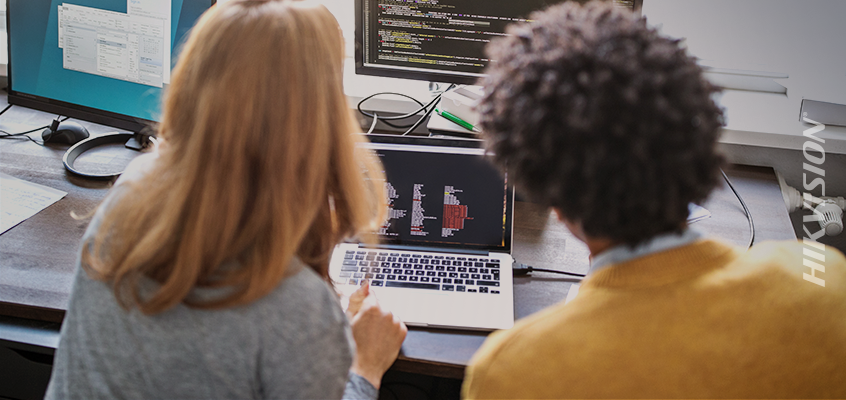Passer de l’intervention en cas d’incident à une approche préventive de la cybersécurité
Conseils de Hikvision pour remédier aux problèmes de sécurité, et règles pour la création de mots de passe difficiles à pirater
Dans l’article intitulé « The Incident Response Approach to Cybersecurity », le magazine Security présente les arguments en faveur d’une autre approche de la cybersécurité axée sur la prévention, d’abord pour s’attaquer aux pirates informatiques et à d’autres problèmes de sécurité.
Extrait de l’article : « Les approches traditionnelles en matière de cybersécurité sont axées sur le signalement des intrusions après coup, dans le cadre de ce que l’on appelle une “intervention en cas d’incident”. Autrement dit, un adversaire, communément appelé “pirate informatique”, trouve un moyen d’accéder à une cible et de la compromettre. La cible est accessible par l’intermédiaire de vulnérabilités dans les structures Web, les navigateurs Internet ou l’infrastructure Internet comme les routeurs et les modems. Une fois le pirate découvert, quelle que soit la manière dont il obtient l’accès, la communauté de cybersécurité reçoit l’analyse relative à l’attaque, y compris les données de base connues sous le nom d’indicateurs de compromission, telles que les adresses IP, les noms de domaine ou les hachages de programmes malveillants. On utilise ensuite communément les indicateurs de compromission pour contrecarrer les attaques futures. »
Le problème avec cette approche? Elle requiert qu’une entreprise soit d’abord victime d’une attaque pour que les données soient transmises aux autres, ce qui laisse les entreprises à la merci des pirates informatiques. Selon l’article, « l’adversaire n’a qu’à utiliser une autre adresse IP ou à recompiler son logiciel malveillant pour générer une nouvelle valeur de hachage (les deux étant des procédures extrêmement banales). Ses attaques franchiront alors les défenses qui dépendent des indicateurs de compromission. Cette méthodologie a posteriori monopolise beaucoup de ressources et génère beaucoup de données apparemment utiles, mais elle reste imparfaite ».
Grâce à l’adoption de mesures préventives de cybersécurité, nous passerions plus de temps à examiner les méthodes utilisées par les adversaires comme les pirates informatiques, au lieu de réagir aux attaques au fur et à mesure qu’elles se produisent. Les analystes en cybersécurité pourraient ensuite mettre en œuvre une méthodologie connue sous le nom de tactiques, techniques et procédures pour déterminer les tendances des menaces cybernétiques avant qu’elles ne surviennent. Cliquez sur ce lien pour lire l’article complet (en anglais).
Hikvision a rédigé de nombreux billets de blogue sur la cybersécurité afin d’aider ses partenaires à résoudre les problèmes de sécurité. Vous pouvez les trouver ici. Dans un récent billet de blogue, intitulé « Le directeur de la cybersécurité de Hikvision présente 3 règles pour la création de bons mots de passe afin de réduire les problèmes de sécurité et le piratage », Chuck Davis donne des conseils pour créer des mots de passe complexes et difficiles à pirater.

